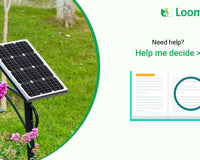People all over the world rely heavily on lithium-ion batteries almost every day. Despite its small weight, higher power density, and potential for replenishment, this innovation is becoming more common in everything from computers and cell phones to hybrid vehicles and electric vehicles. So, you might be puzzled and curious about its working. In this guide, we explore how lithium-ion batteries work, the science behind them, how they charge and discharge, and their applications.
Perfect Energy Storage
2 times battery life, consumes 50% less space, needs no maintenance & takes 60% less recharge time
What is the science behind lithium-ion batteries?
Anode, cathode, separator, electrolyte, and two current collectors, positive and negative, make up the whole Lithium-ion battery. The lithium is stored in the anode and cathode. The electrolyte transfers positively charged lithium ions from the anode to the cathode of the separator. The mobility of lithium ions inside the anode produces free electrons, resulting in building a charge towards the positive current collector. The electrical charge then travels from the positive current collector to the negative current collector connected to a cell phone or a computer device. Within the battery, the separator stops the electrons from flowing freely.
How do lithium batteries get charged or discharged?
The anode transfers lithium ions toward the cathode as the battery starts discharging and delivering an electric current, resulting in an electron flow between one end towards the other. Once a gadget is plugged into a wall source or through a power adapter, the cathode discharges lithium ions, which are then accepted by the anode.
What are the applications of lithium-ion batteries?
Lithium-ion batteries come in a variety of forms and sizes. As a result, they are an excellent choice for energy requirements, regardless of several parameters. Furthermore, lithium-ion batteries provide energy solutions that transcend various possibilities, including use cases such as storing energy and portable energy. The following are some of the most common uses for lithium-ion batteries.
- Mobile phones, laptop computers, and other typical range of consumer electronics like smartwatches, wireless earphones, & Bluetooth speakers are all powered by lithium-ion batteries.
- In Electric vehicles (EVs), A Lithium-ion battery replaces the gas tank, and an electric motor replaces the internal combustion engine entirely in electric automobiles.
- Lithium-ion batteries are used in drones and satellites.
- Used in Portable Power Batteries that Help Reducing Power outages
- Lithium-ion batteries are used by UPS for computers and other emergency power backup systems such as inverters to run home
According to Visual Capitalist, as the demand for electric vehicles develops, the amount of lithium used in batteries is expected to increase even further, with batteries accounting for 84% of all lithium output by 2025.
We believe that this guide has helped you understand the workings, science, and applications of lithium batteries.
Source:
- https://elements.visualcapitalist.com/lithium-consumption-has-nearly-quadrupled-since-2010/
- https://www.eletimes.com/lithium-ion-battery-applications-advantages
- https://www.energy.gov/eere/articles/how-does-lithium-ion-battery-work













2 comments
Stephanie Sally
Hello everyone, I am from Wembley, Britain. I want to write this testimony to tell others and thank Dr. Odunga for what he has done for me. The first 12 years of my marriage I had 5 miscarriages and I was called all sorts of names by my mother-in-law and this made my marriage life very hectic and a burden of sorrow. I contacted Dr. Odunga for help and I will say that he is a very strong and honest man and he indeed helped me solve my problem. I saw his email in a testimony and I contacted him, little did I know it would be the end of all my problems. After 2 days of contact, I received a fertility herb and he told me to use it. The herb worked and my husband even loved me more and bought me expensive things. One afternoon, I went to a nearby hospital and came back home with the positive result of my pregnancy and after 9 months I gave birth to a baby boy. Ever since I contacted Dr. Odunga, my story has been different. I have 3 children at present and I am very happy in my marriage. Please, contact him at odungaspelltemple@gmail.com OR Whats App him +2348167159012 to help you too
Manuel Franco
I just want to say Thank You to everyone who supported me through the years. My name is Manuel Franco, New Berlin, Wisconsin. My story of how I won the Powerball lottery of $768.4M is a bit of a tale. I have been playing Powerball tickets for 6 years now since I turned 18. I bought my first ticket on my 18 birthday. I was feeling very lucky that day because I had contacted Dr. Odunga Michael to help me with the winning Powerball numbers. I really had that great great feeling that I looked at the camera wanting to wink at it. I only did a tiny part of it and trusted him. He gave me the numbers after I played a couple other tickets along with it for $10. I checked my ticket after the winnings came online and saw the numbers were correct including the Power play. I screamed for about 10 minutes because it felt like a dream. I had won $768.4M. You can check my winning testimony with the lottery officials just with my name search. Thank you Dr Odunga. Well, his email is odungaspelltemple@gmail.com and you can also call or Whats-app him at +2348167159012 so you guys can contact him